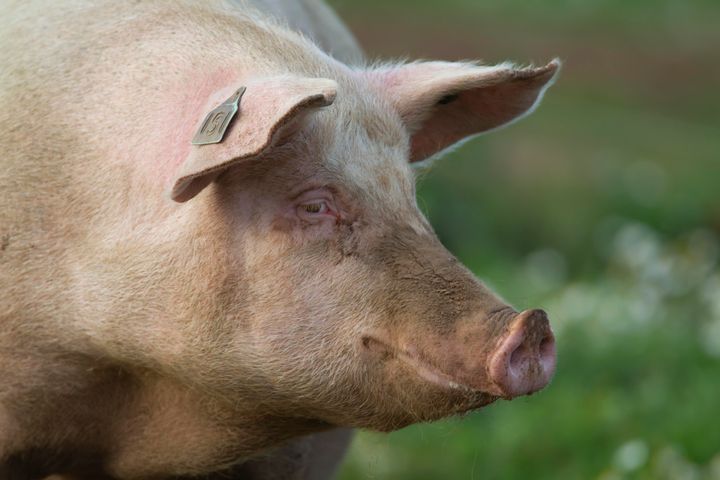
The UK has just detected the first case of influenza similar to a virus currently circulating in pigs, according to the UK Health Security Agency.
The individual had a mild illness and has recovered, the UKHSA revealed on Monday.
The illness, known as influenza A(H1N2)v, is similar to the flu viruses currently detected in some pigs, but different to the infections found in other previous human cases of the strain found around the globe.
Here’s what we know about it so far.
What is this influenza virus?
Influenzas, known in the scientific community as A(H1), are common in swine populations in most region in the world.
Variants known as H1N1, H1N2 and H3N2 all infect pigs – and sometimes humans who may have been exposed to swines or the contaminated environment.
Once it’s found in a human, it is called a “variant influenza virus”.
The UKHSA says: “There have been a total of 50 human cases of influenza A(H1N2)v reported globally since 2005; none of them related genetically to this strain.”
The health agency did not release a list of symptoms of the virus.
How was it detected?
It was picked up in a routine national flu surveillance undertaken by UKHSA and the Royal College of General Practitioners, in a PCR (polymerase chain reaction) test.
The individual was tested by their GP after showing respiratory symptoms.
UKHSA incident director Meera Chand said: “This is the first time we have detected this virus in humans in the UK, though it is very similar to viruses that have been detected in pigs.”
What does this mean for animal-human disease transmission?
Chief veterinary officer Christine Middlemiss noted that animal to human transmission was already a known risk.
She said: “We know that some diseases of animals can be transferred to humans – which is why high standards of animal health, welfare and biosecurity are so important.
Through our animal and human surveillance systems we work together to protect everyone.
“In this case we are providing specialist veterinary and scientific knowledge to support the investigation. Pig keepers must also report any suspicion of swine flu in their herds to their local vet immediately.”
Millions were previously infected during the 2009 swine flu (H1N1) pandemic, caused by a virus with genetic material from viruses in pigs, birds and humans.
This form of influenza is now in humans regularly and no longer known as swine flu – it’s also very different to the virus currently circulating in pigs.
What happens next?
The health agency still does not understand the source of the infection, so an investigation is ongoing.
Close contacts of the person who was infected are still being monitored and will be offered testing if they start to exhibit symptoms.
UKHSA says it is working closely with its partners to help understand the “characteristics of the pathogens” and assess the risk to human health.
The agency added that it is “taking steps to increase surveillance within existing programmes involving GP surgeries and hospitals in parts of North Yorkshire”.
What does the UKHSA advise for the general public?
The health agency recommended: “People with any respiratory symptoms should continue to follow the existing guidance; avoid contact with other people while symptoms persist, particularly if the people they are coming into contact with are elderly or have existing medical conditions.”
